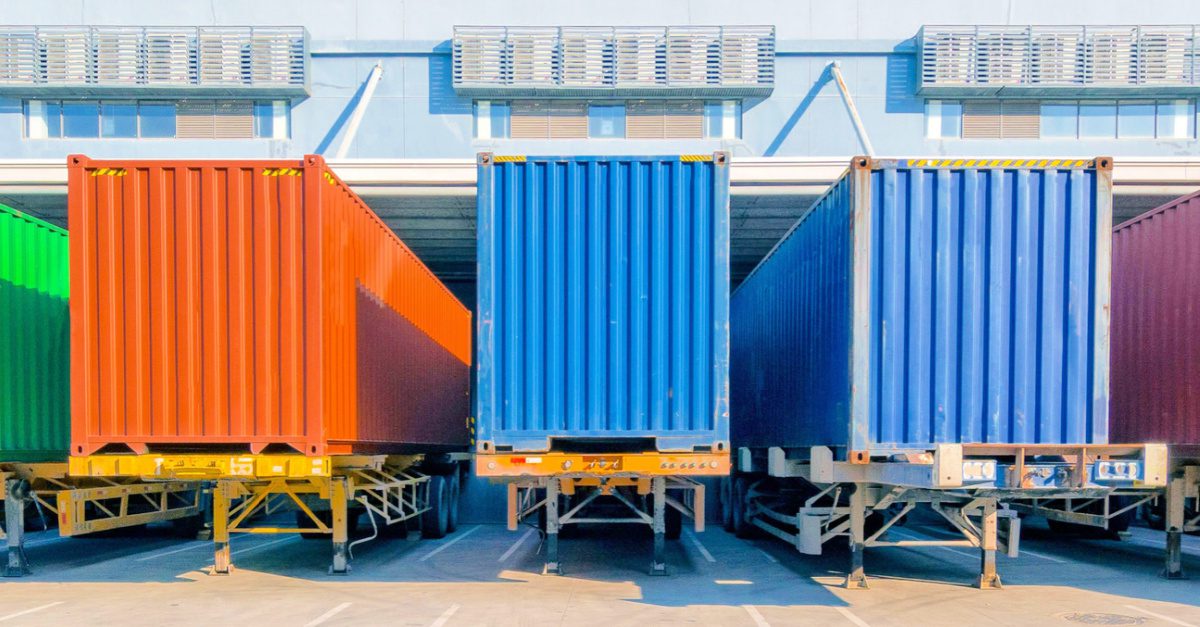At first glance, container drayage seems straightforward. Moving cargo from the port to the final destination should be a breeze after traveling thousands of miles across the ocean, right? However, even a minor hiccup can hold up your cargo, like a snack, frustratingly dangling in a vending machine. Efficient container drayage is pivotal in ensuring the supply chain operates smoothly, delivering goods exactly when and where they are needed.
The Complex World of Container Drayage
Container drayage is more than just moving containers; it’s about navigating a maze of logistical challenges. Often the shortest leg in a container’s journey, drayage services involve transporting cargo containers from ports to warehouses, rail yards, or directly to the final destination, but require precise coordination. This process is integral in bridging sea and land transport. However, various factors must align perfectly for the cargo to move smoothly to its destination.
Here are some of the common challenges we see in container drayage:
- Port Congestion – Ports often experience high volumes of incoming and outgoing shipments, leading to delays and logistical bottlenecks.
- Chassis Availability – The scarcity of chassis (the wheeled frames used to carry containers) can lead to significant waiting times and inefficiencies.
- Capacity Constraints – High demand for drayage services coupled with limited resources can lead to capacity issues, affecting the timely movement of cargo.
- Labor Slowdowns – Challenges in labor management can impact loading and unloading times, causing further delays in the supply chain.
- Complex Paperwork and Compliance – Navigating customs and regulatory requirements complicates drayage, especially with the lack of digitization.
- Coordination Across Multiple Stakeholders – Effective drayage requires the synchronization of schedules and requirements among ports, trucking companies, warehouses, and other entities.
- Weather and External Factors – Whether disruptions such as hurricanes in the southeast disrupt schedules.
Each challenge represents a potential hurdle in the container drayage process, necessitating expertise, foresight, and strategic planning to overcome. Mastering these complexities and finding the right partner is essential for the smooth transition of cargo from sea to land.
Three Strategies for Optimized Container Drayage Operations
Navigating the complexities of container drayage requires strategic approaches. Here are three key strategies that can significantly enhance the efficiency of drayage operations.
Strategy 1: Efficient Network Coordination
At the core of effective container drayage is coordinating a diverse network of stakeholders. Efficient network coordination involves aligning the various elements of the supply chain to ensure seamless operations. At LGI, we leverage our network of over 11,000 trusted and qualified carriers to facilitate communication and collaboration among ports, trucking companies, and warehouses. This approach not only streamlines operations but also helps to avoid potential delays, ensuring that cargo moves efficiently through each stage of the supply chain.
Strategy 2: Smart Technology Integration
Technology integration in container drayage operations is rising and promises to improve manual and outdated systems. LGI enhances operational visibility and decision-making by implementing systems like GPS tracking and real-time data analytics. This technology enables more precise tracking of cargo, better route planning, and improved response to unforeseen challenges. It’s about making each logistics chain move more innovative, efficient, and responsive to the dynamic nature of global trade while embracing the digital revolution.
Strategy 3: Collaboration and Transparency
Collaboration and transparency are fundamental to the success of container drayage operations. This strategy fosters open communication and cooperation among all parties, from shippers to carriers and logistics providers. LGI champions this approach, ensuring every stakeholder has clear, up-to-date information, facilitating better coordination, and building trust across the supply chain.
Freight Forwarders: The Key to Streamlining Container Drayage
In the complex world of container drayage, the right freight forwarder makes a significant difference. With expertise and commitment to innovation, freight forwarders are crucial partners in managing the multifaceted aspects of drayage and reducing costs.
Navigating the Path Forward in Container Drayage
Container drayage, with its numerous intricacies, requires a strategic approach underpinned by expertise and innovation. Efficient coordination, advanced technology, and collaborative efforts are essential to this approach. With our deep industry knowledge and commitment to customer service, LGI stands ready to guide clients through the complexities of container drayage. Our focus on technology, network coordination, and transparent communication transforms potential logistical challenges into streamlined, efficient operations.
Businesses can manage their cargo efficiently and carelessly by partnering with LGI. For optimized container drayage solutions, LGI is the partner you need. Contact us today for a free quote and discover how we can support your logistics needs.
